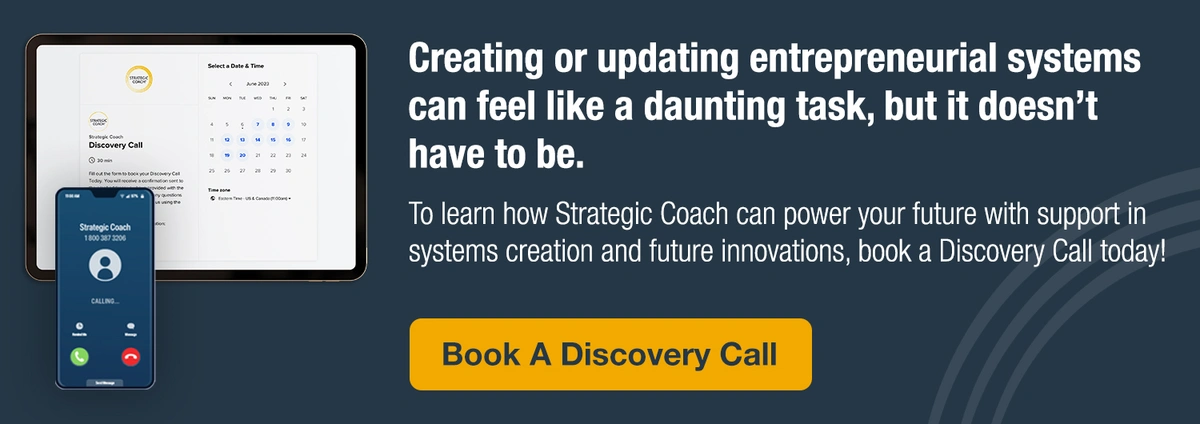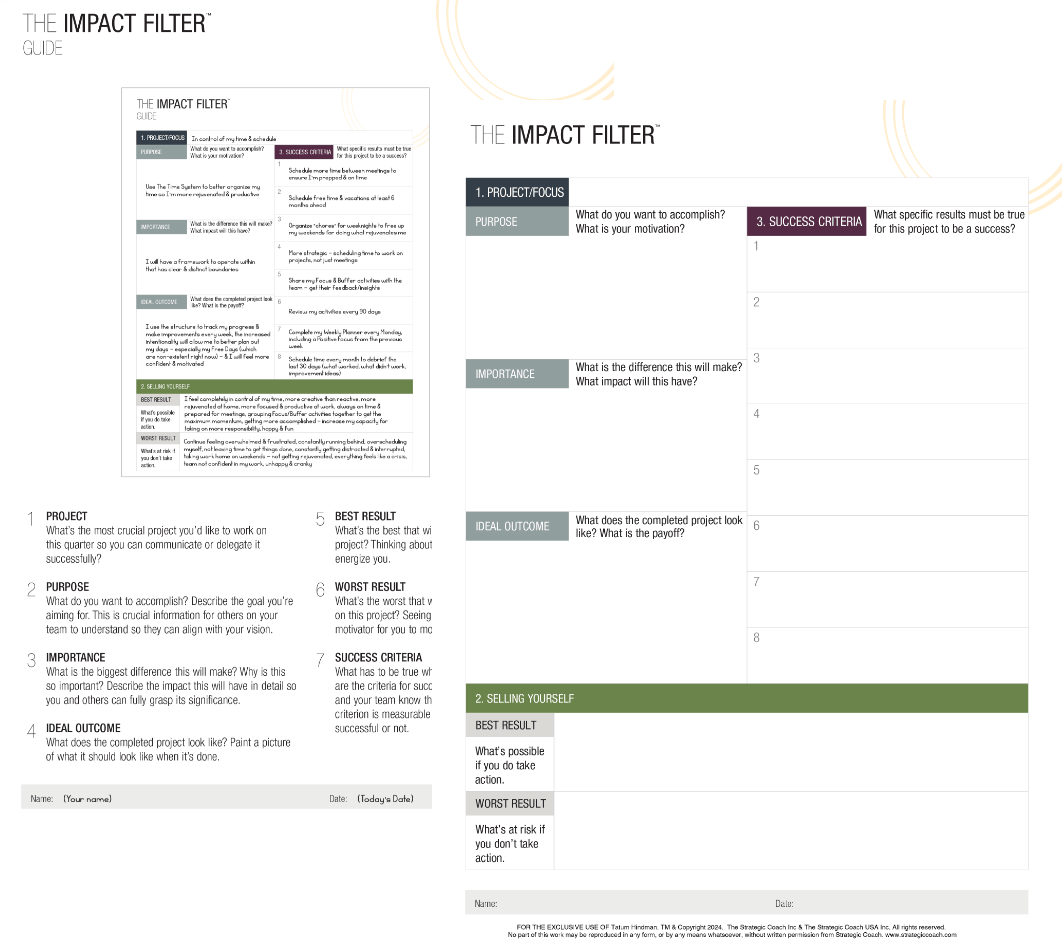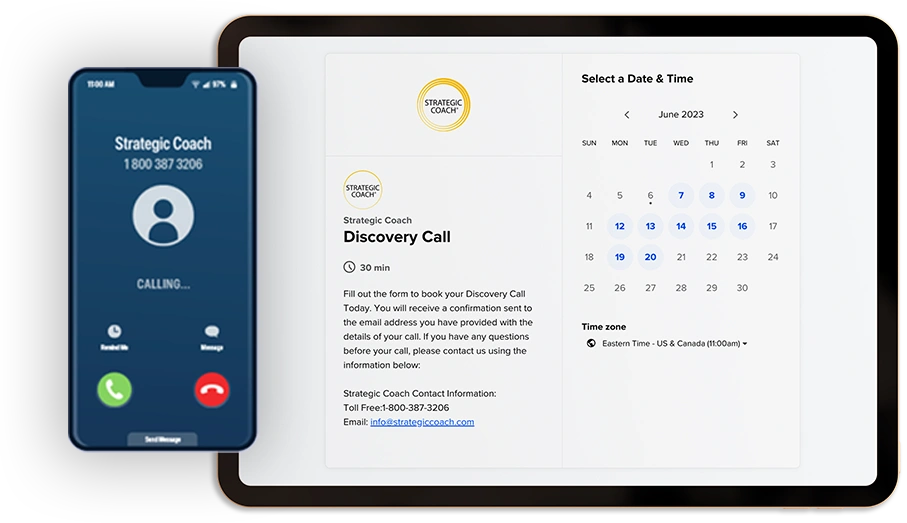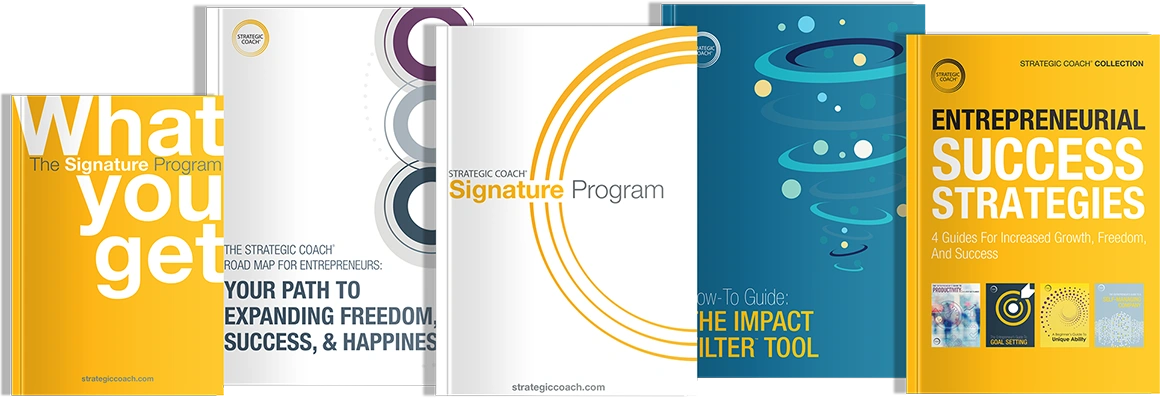Outdated Systems Holding You Back? Here’s How To Innovate For The Future
What you’ll learn in this Multiplier Mindset blog post:
- The importance and impact of well-oiled entrepreneurial systems.
- The four steps to creating (or updating) effective and successful systems that stick.
- How to review and make system improvements along the way.
While often seen as the tedious and unglamorous side of business, systems are the heartbeat of your organization. Yet many entrepreneurs are deathly afraid of feeling oppressed by their own systems.
The importance of systems for future innovation.
The truth is, proper systems lead to stability and growth, eliminate confusion within your team, and act as a safety measure against the unexpected. They also make your business less dependent on you to steer the ship, giving you more freedom to use your time for what matters most while increasing the value of your company. Finally, and perhaps most importantly, they help you plug costly efficiency leaks you can’t even see.
Taking the time to systematize your business is a worthwhile pursuit. As Josh Fonger, a systems expert, business coach, and recent guest on Shannon Waller’s Team Success podcast, says, “People come and go, but systems stay. Systems are assets.”
The four steps to building a successful system.
Systems are designed to enable continued learning and transformation inside your organization. They result in a better-run business with less stress and much better teamwork.
In his interview with Shannon, Josh shares the four core pillars of his “Work the System Method.” Listen to the episode to hear some incredible ways this method has worked for entrepreneurs.
Step #1: The Right Mindset
To create or update systems that stick, you first need to separate yourself from the business and view it from above. This is necessary to see the distinct pieces that you (or whoever is closest to that specific process) will need to systematize. If you don’t have this mindset and take the time to cultivate this vantage point, you won’t stick with it—and neither will your team.
Step #2: Create A One-Page Strategic Objective
Most companies have already articulated their vision, values, and mission in some way. A Strategic Objective document brings this together to briefly let everyone know what you’re building and with whom, whom you serve, where the company is going, and how you’ll get there. Naturally, if you don’t know what you’re building, you waste a lot of time, so this is to maximize your efficiency and refine your system-creation efforts.
Step #3: Lay Down Operating Principles
Not everything needs to be documented. In fact, most things don’t—if you have principles to help guide decision making when “gray areas” come up. How should your team think about teamwork, efficiency, equality, and customer service? How should things be handled, and what’s expected? Having operating principles will save time, prevent you from being pulled into every nuanced situation, and make those situations efficient, verified, controlled, and based on strategy and principle rather than emotion.
Step #4: Document Procedures
The goal is to hand off the documentation of procedures to the person in the business closest to the task or process, or someone who can shadow and document the person doing the work. The idea is to document the procedure so well, it can be repeated by anyone.
As you build and refine each system, you’ll see it yield returns in terms of efficiency, quality, speed, and protection. Remember: These documents can (and should!) be updated as your team finds better ways to do things. Encourage a culture of growth and evolution, and keep lines of communication open for conversations on how things can be done better.
When documenting procedures, don’t forget to articulate what success looks like for each particular process.
Systems are all about growth, scale, and innovation for long-term success. With the proper systems in place, your workplace will have less friction and chaos, and your team will thrive in an environment where their best ideas are heard and used to make a positive impact.








